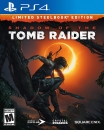On the topic of scaling, I think games like Starfield are poor examples of scaling, if we take it from the perspective of does one's experience change much playing on different platforms.
Basically playing low-medium on my Rog Ally as a handheld looks very similar (from a feature-set perspective) to my Series X which in turn looks very similar to my RTX 4080 desktop. It's really resolution and frame-rate that are most noticeable between these platforms. It has actually been a seamless transition to go back and forth from playing Starfield on the Rog Ally (@ variable 35-50fps), to the Series X in my living room on a 4k 60hz VRR display (@30fps), to my PC in my bedroom on a 4k 120hz VRR display (@ a variable 60-90fps.)
It is almost a meme how close Low, Medium, and Ultra are in that game.
https://www.youtube.com/watch?v=nFa6waRs-L0
*Look at the comments, as others seem to agree.*
On the other-hand, a game like Alan Wake 2 doesn't run properly on pre-Turing/RDNA platforms due to lack of DX 12 Ultimate support. So from a "playable on x platform" perspective, Starfield scales pretty well in that you can play the game on old platforms, which is something you can't really do with Alan Wake 2.
Having said that, I don't think a PS4 would be able to play Starfield at a stable 30fps though, in its current state, unlike the 2600k + HD7850 platform, because the game can be quite CPU heavy and the difference between a 2600k and the PS4's Jaguar in terms of IPC and overall performance is pretty steep.




























































